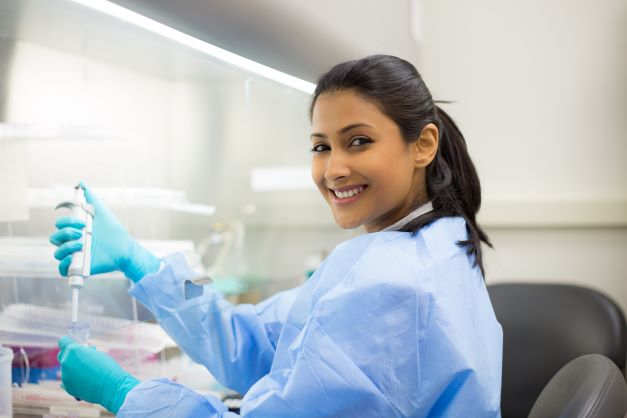
The Howard Hughes Medical Institute (HHMI) Janelia Research Campus recently announced that the Shroff Lab, along with its collaborators, has developed a groundbreaking AI method that produces sharp microscopy images of thick biological samples without the need for adaptive optics, additional hardware, or extra image acquisition.
New artificial intelligence (AI) techniques hold the potential to generate clear images of these thick biological samples.
HHMI explains that as researchers examine a sample more closely, the clarity of the image diminishes.
Although a tissue sample may be only a few tens of microns thick, light bending results in a loss of sharpness as the microscopy equipment penetrates beyond the surface layer.
Dark-field microscopy is a commonly used imaging technique in biology that provides high contrast for analyzing blood cells, algae, and other marine organisms.
For many years, dark-field microscopy has been employed to reveal fine details that a standard bright-field microscope cannot visualize with high focus and clarity.
This technique generates high-contrast images of microorganisms in water, including algae and blood cells.
In 2020, engineers from the Massachusetts Institute of Technology introduced a technique that enhanced dark-field microscopy.
They utilized a small, mirrored chip to produce images, eliminating the need for expensive components typically found in traditional methods.
This advancement opened new avenues for diagnostics and other biological analytical applications.
In a paper published in Nature Photonics, the engineers described how their method can be manufactured into a compact device, thereby broadening its potential applications.
Researchers at Janelia have developed a similar correction method that does not rely on adaptive optics, hardware modifications, or additional imaging equipment.
The Shroff Lab team developed an AI-based technique that generates sharp microscopy images throughout thick biological samples.
To create this new method, the team first modeled how an image degrades as the microscope images deeper into a uniform sample.
They then applied this model to near-side images of the same sample that were clear, intentionally distorting them to mimic the more profound images.
Next, they trained a neural network to reverse the distortion, allowing for a clear image across the entire depth of the sample.
This new method not only produces visually appealing images but also enables more accurate cell counting in worm embryos, better tracing of vessels and tracts in whole mouse embryos, and examination of mitochondria in pieces of mouse liver and heart tissue.
Importantly, this deep learning-based method requires only a standard microscope, a computer with a graphics card, and a brief tutorial on how to run the computer code, making it more accessible than traditional adaptive optics techniques.
The Shroff Lab has already begun using this innovative method to image worm embryos, and the team plans to further develop the model to reduce its reliance on the sample’s structure, thereby enabling its application to less uniform samples.
🔬 The Shroff Lab & collaborators have developed a new AI method that produces sharp microscopy images throughout a thick biological sample without using adaptive optics, adding additional hardware, or taking more images.
🔗https://t.co/FugWwpP0Tq pic.twitter.com/GetSIH9xOa— HHMI | Janelia (@HHMIJanelia) January 7, 2025
The U.S. Army Corps of Engineers has been tasked with…
Brown and Caldwell, a leading environmental engineering and construction firm,…
Humboldt State University, one of four campuses within the California…